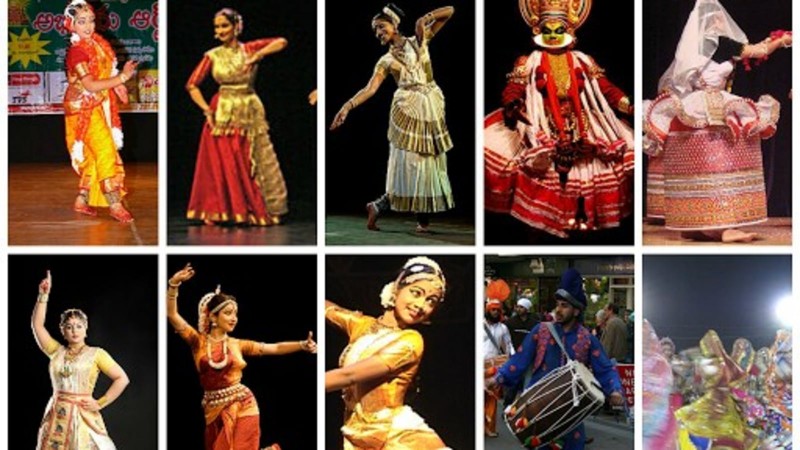
India is renowned for its diverse cultural heritage, and one of the most captivating aspects of this heritage is its vibrant folk dances. With a rich tapestry of traditions, each region of India boasts its unique folk dances, reflecting the customs, rituals, and celebrations of its people. The folk dances of India are a testament to the rich cultural heritage and diversity of the country. Each dance form showcases unique movements, costumes, and rhythms that reflect the traditions, rituals, and celebrations of the region. From the energetic and vibrant Bhangra of Punjab to the graceful and mesmerizing Kathakali of Kerala, these dances embody the spirit and essence of their respective states. Exploring the folk dances of India not only offers a visual feast but also provides a deeper understanding and appreciation of the country's cultural tapestry.
also read - Indian Mythology and Folklore: Unveiling the Tapestry of Ancient Tales
Bhangra (Punjab):Originating from the agricultural region of Punjab, Bhangra is a lively and energetic dance form. Accompanied by the beat of the dhol (drum), dancers perform vibrant moves, characterized by high jumps, vigorous footwork, and energetic spins. The costumes, adorned with colorful turbans, vivid long shirts, and flowing skirts, add to the exuberance of the dance. Bhangra is often performed during harvest festivals and celebratory occasions.
Garba (Gujarat):, a traditional dance form of Gujarat, is a joyful celebration of dance and music during the Navratri festival. Dancers form circles and perform intricate footwork and graceful hand movements, accompanied by rhythmic clapping. The vibrant costumes, embellished with mirror work and intricate embroidery, create a mesmerizing visual spectacle. Garba is known for its captivating energy and the festive atmosphere it creates.
Kathakali (Kerala):Originating from the southern state of Kerala, Kathakali is a highly stylized dance form that combines elements of dance, drama, and music. Dancers wear elaborate makeup, colorful costumes, and larger-than-life facial masks. The movements are precise and nuanced, expressing a range of emotions and stories from Hindu epics. Kathakali is known for its intricate hand gestures, elaborate facial expressions, and powerful storytelling.
Bihu (Assam) is a folk dance form from the northeastern state of Assam, performed during the Bihu festival. It is a celebration of the arrival of spring and the harvest season. Dancers, clad in traditional Assamese attire, perform lively and rhythmic movements to the beats of drums and bamboo flutes. Bihu dance is characterized by rapid footwork, synchronized hand movements, and energetic leaps. The colorful costumes, adorned with traditional motifs, add to the vibrancy of the performance.
Ghoomar (Rajasthan)is a traditional folk dance of Rajasthan, performed by women during festive occasions. Dancers, dressed in vibrant Ghagra Choli (long skirt and blouse), twirl gracefully in circles, creating a mesmerizing display. The footwork is delicate, accompanied by graceful hand movements and swirling of the long skirts. Ghoomar reflects the elegance, grace, and femininity of the Rajasthani culture.
Odissi (Odisha) is a classical dance form originating from the state of Odisha, but it also has folk elements within it. It is known for its intricate footwork, graceful hand gestures, and fluid body movements. Dancers wear colorful traditional costumes, including the flowing saree for women and dhoti for men. Odissi dance often depicts mythological stories and is characterized by its lyrical beauty and expressive storytelling.
also read - Indian Traditional Festivals and Celebrations